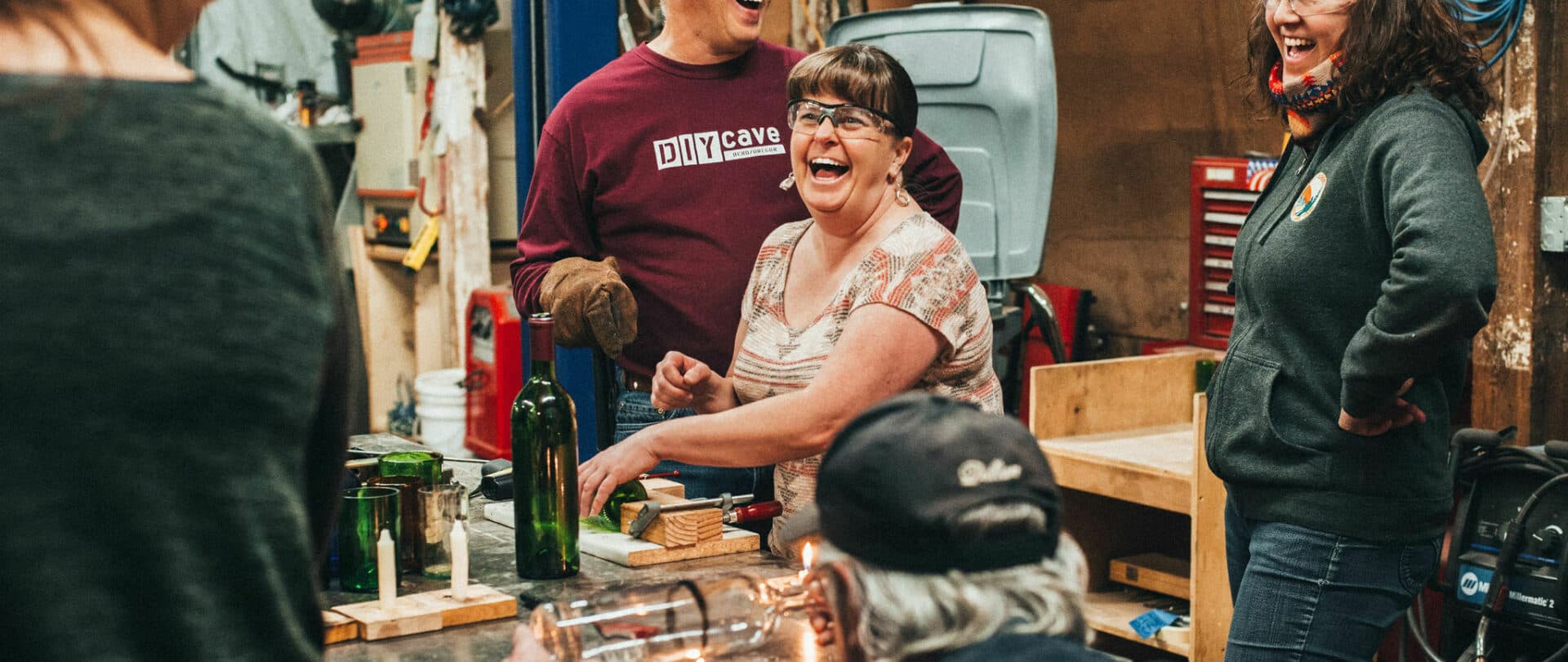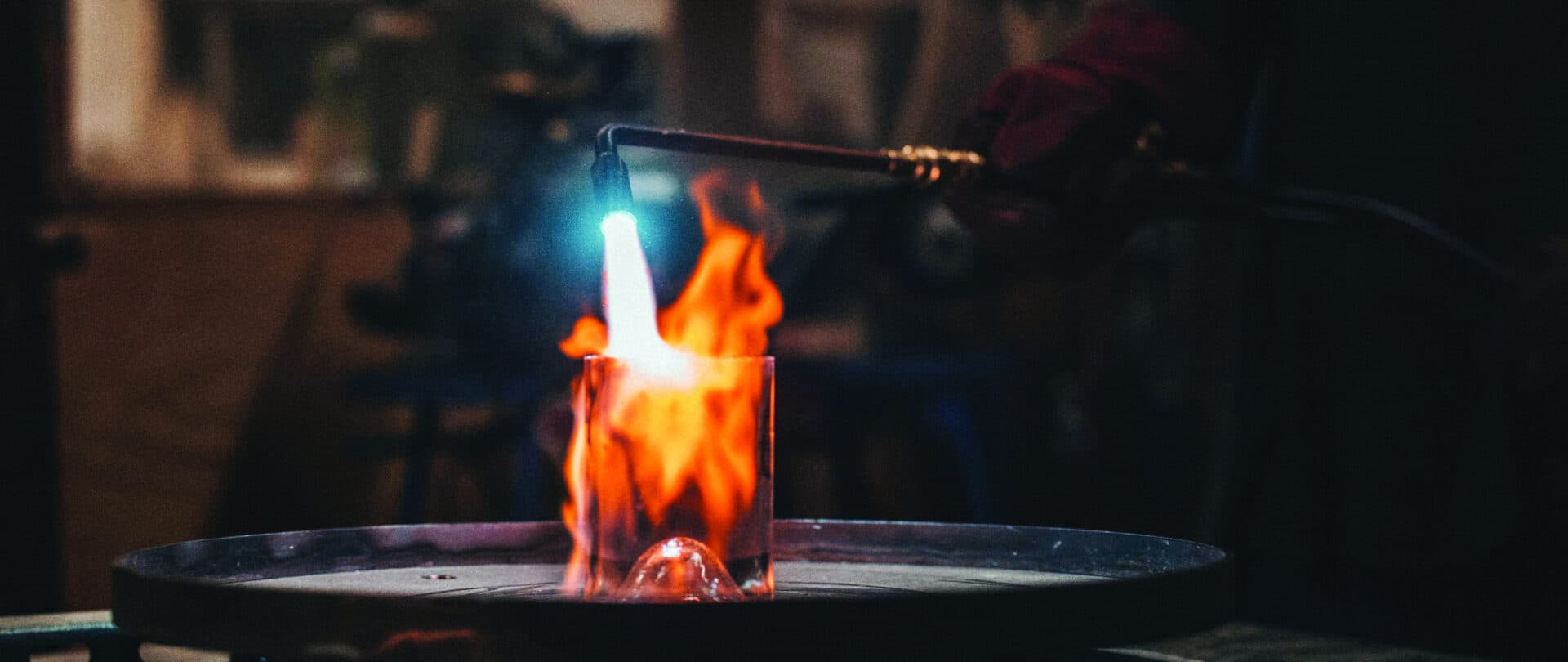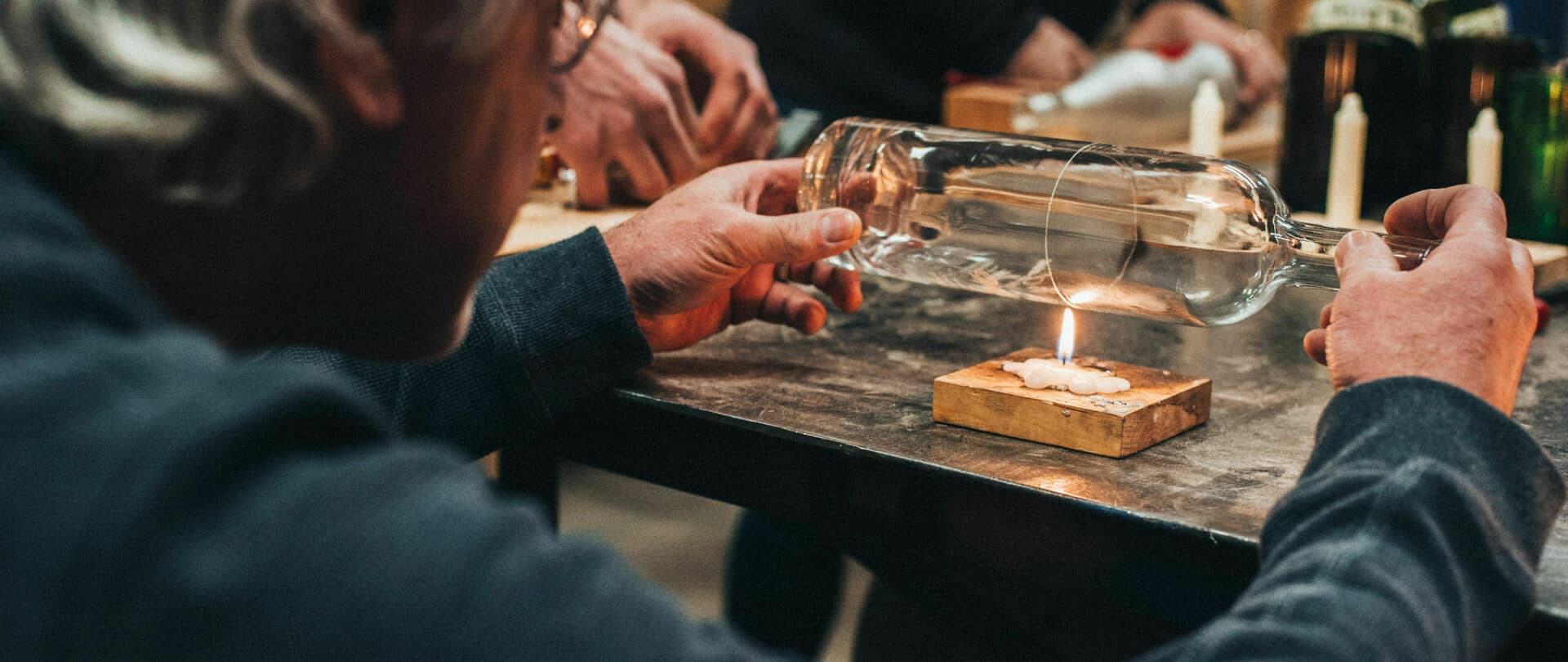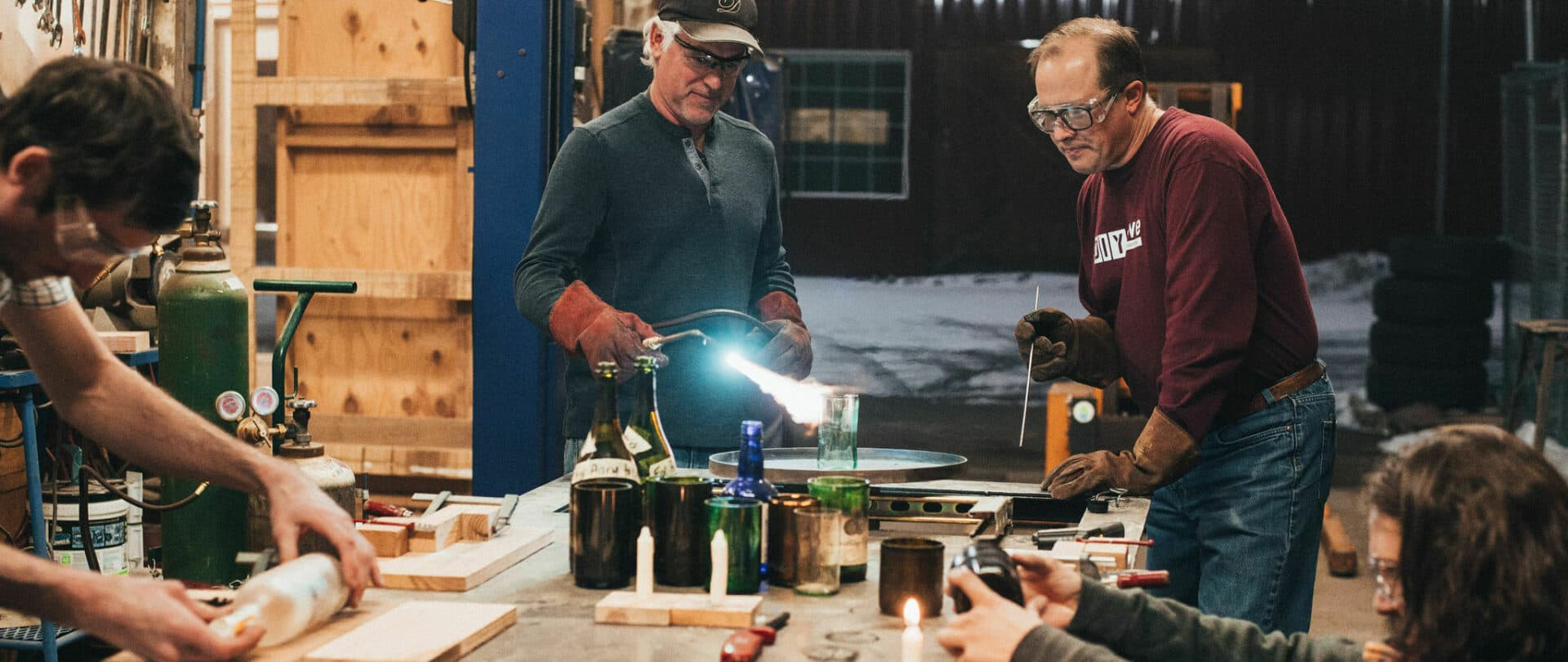DIY Cave
Bend’s do-it-yourself collective maker space is the shop you always wanted.
BY Meghan Robins
Whether you are visiting or living in Central Oregon, if you have a one-off project, are starting a business, or are curious about learning new skills, DIYcave has options for you. Want to wax your own skis before tomorrow’s powder day? Need to weld a hitch to your vehicle? Want to make jewelry, stained-glass, or 3D flowers but can’t afford to find or store the tools at home? At DIYcave, everyone is welcome.
In 2015, Aaron Leis and Tim Willis started DIYcave with a vision to bring a community-based maker space to Central Oregon. Their main goal was to prove that creating a comprehensive, collaborative worker space for the community is a business model that works, and it does.
“We’re getting close to understanding the business well enough that we could duplicate it in other cities,” says co-founder Tim Willis. The idea started with a four-hour conversation and a shared idea between two strangers sitting on a tailgate. Nearly a decade later, DIYcave has become a major community hub for teaching, creating, and making. Early supporters helped look for the space, created a business plan, and then emptied their own garages full of tools. This was the start of the shop.
Since then, multiple businesses have been started in, and still rely on, DIYcave. Some carpenters rent the woodshop for full cabinetry builds. Jewelers are running entire operations from DIYcave studios. One couple lacking garage space rented a stall in the Large Project Area, which comes with an onsite shipping container for storage, and built out an old bus where they now live. The nonprofit Hearts Unknown Education (HÚE) was housed and incubated at DIYcave, offering safe and supportive on-site creative arts classes for young people struggling with anxiety and depression.
Not every hobbyist needs, can afford or necessarily wants a garage full of tools. Instead, you can either bring your own tools or, more likely, DIYcave has what you need. 90,000 square feet of shop space is organized by categories: woodworking, metal, tech, blacksmithing, glass, and jewelry. Certain tools like the 3D printer, welders, torches, select woodshop tools, kiln, and stained-glass equipment require certification. But many tools do not. If you show up and have experience with certain machines, you can use them. This community workspace has practically everything, including high-end specialized laser cutters, welders, an auto lift, and kilns. Equally important is their roster of experienced, professional instructors.
Classes are a mainstay at DIYcave. Date Night welding and woodworking classes fill up quickly (So book early.). Typical classes are limited to six participants to provide individualized instruction from specialized instructors. Kids classes include Intro to Robotics, Kids 3D Printing, FIRST® LEGO® League, Youth Welding, and more. Adult classes include Epoxy River Tables, Bladesmith Forging with Wood Handles, Home Brewing 101, Intro to Soldering, Wood Furniture Making, Monthly Jewelry Lab, Women’s Welding, and so much more. Some classes combine disciplines, like turning the fused glass pendant you made last week into a piece of jewelry through metal working this week.
At DIYcave, the possibilities are endless. “Think It, Make It” is their tagline for a reason. Co-founder Willis says, “It’s rare that someone comes in with a project we can’t figure out how to get it done.” Because when a unique project comes up, DIYcave members tap into the larger community: there are so many experts, resources and passionate people throughout Central Oregon, and DIYcave helps make those connections. In fact, they’re eager to.
The real value of their business is in the volunteers, or Shop Stewards, a position so coveted there’s currently a 15-person waitlist. “People volunteer because they believe in this concept,” says Willis. “And they value the community. We have one guy who says that most of his closest friends he’s met here at the shop.”
So, how does the business model work? A small stipend for shop management and teaching hours was allocated; and membership and class fees cover baseline operations. The front desk is run by volunteer Shop Stewards who work one shift per week in exchange for shop access and membership. Instructors are self-employed contractors who teach consistently but on their schedule. Tools and supplies have been purchased and donated over the years.
Additional income comes from the 14 maker/artist studios available to rent monthly, including a free membership and access to tools and spaces. Resident artists vary from hobbyists to full-time businesses including a DJ, photographer, fiber artists, glass wholesaler, sculptor, silk-screener, seamsters, painters, graphic artists, multimedia artists and more. Private workspaces and meeting rooms are also available to rent.
The best way to support DIYcave is to become a member and take a class. Classes serve an average of 90 students per month, with over 1,100 students served last year. Annual membership fees typically pay for themselves after 10 to 15 hours of shop use. Members get 20% off classes and private instruction, 50% off hourly shop rates and discounts on fabrication services (paying DIYcave to fabricate items for you). Currently DIYcave is sustained by over 275 members, and last year they served an additional 370 non-members.
Approximately half of DIYcave users are hobbyists, while the other half are using the makerspace to create a business, promote their business or operate their business entirely. “One of my favorite parts of working with DIYcave is seeing someone take a class that turns into a hobby that turns into a business,” says Heather Weiermann, marketing contractor and glass instructor. “One of my stained-glass students just celebrated her one-year anniversary taking her first stained-glass class here at DIYcave. Now she sells her pieces in local stores, events, markets and online.”
DIYcave is more than a collaborative space for creativity. It enables people to learn a trade, start a business and find their passions. Plenty of people walk in without specific ideas, experiences or projects. Heather says, “When new people come in, we give them a tour and ask, ‘What are you curious about?’ They often gain ideas of what other shop areas they could use, and a glimpse turns into a vision.”
More than a makerspace, it’s a community. And you’re invited. Whether you’re passing through or live in the area, sign up for a class, reserve a shop space or become a member today. The attitude is relaxing, welcoming and engaging. “It’s better if you come in,” says Willis. “That way I can show you what I’m talking about.” Their plan is to keep growing, increase shop sizes and add more resources. And with the enthusiasm of this community, if they think it, they’ll make it.




